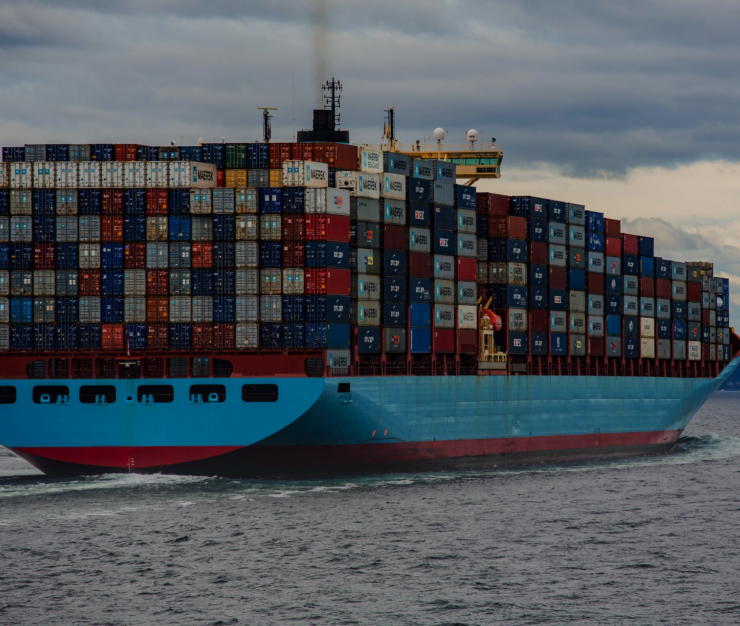The Re-Beginnan | Vol.2 | Issue 4
Businesses have gone through a lot of turmoil since the beginning of Covid-19 outbreak. First, the suspension of manufacturing units in China impacted international trade creating a domino effect on the global supply chain. Then, the nationwide lockdown and stringent impositions jammed the logistics industry in India. Labour shortages also added to limited availability of transportation facilities.

Throughout the lockdown, logistics of essential products was exempted by the GoI. It was taken in the wake of a growing crisis wherein consumers flooded grocery stores to grab even the last essential item stacked on shelves. Access to select 17,229 PIN codes was allowed out of the total 26,000 serviceable pin-codes (prior to imposition of lockdown).
Stock-outs during rising demand
As per the Shiprocket survey, medicines and food items emerged as the top essential commodities comprising a share of 80% and 16%, respectively, during this period. Comparatively, personal care, supplements, and pet care products held relatively low demand. Meanwhile, the in-transit shipments containing non-essential goods remained stuck in warehouse hubs. In other words, they were absent from the supply-chain landscape.
Despite availability of trucks, there is scarcity of truck drivers as most drivers have migrated back to their home towns.
Shops shut — both physical and web-based
Citing operational constraints, even the renowned e-commerce platforms along with smaller players initially could not cater to the sellers on their platform.
In the same lockdown report by Shiprocket, with a sample size of 1,931 sellers, metro cities and popular centers clocked the maximum to and fro of goods. Delhi, Mumbai and Bengaluru registered the highest numbers of pickups and deliveries, followed by Gurgaon and Hyderabad. It is noteworthy that the number of sellers active during the lockdown was only 7 per cent of those operating in the pre-COVID era.
Getting the wheels back on track
The estimated loss as per ICC (Indian Chamber of Commerce) in the logistics sector is as high as 50,000 crores. Inland logistics player’s volume is expected to fall by 10–15% in 2020–21. Viewing the constantly deteriorating state of the economy, reopening the businesses became imperative for the government. But, not without ensuring the precautionary health measures.
Government measures to facilitate the logistics sector
In Budget-2020, a fund allocation of INR 1.7 lakh crore was announced by the Finance Minister Mrs. Nirmala Sitharaman to improve transport and infrastructure, railways, warehousing and logistics. Additionally, National Logistics Policy (Draft National Logistics Policy) was proposed which aims at seamless movement of goods across the country, creating a single-window e-logistics market, generation of employment, cutting logistics cost now estimated at 13–14% of GDP to 10%, greater competitiveness in the international market, development and optimization of modal mix and multimodal infrastructure, process re-engineering, digitization and modernization of warehouses.
The government and other departments introduced relief measures during the lockdown:
- Three-month a moratorium on repayment of term loans, reduction in repo rate, and deferment of interest on working capital for 3 months;
- Tax concessions — Reduction in interest on delayed payment;
- Reduction in EPF Contribution for businesses (i.e. from 12% to 10%);
- Reduction in TDS / TCS rate by 25%.
‘The Post-Covid19 World’
Tech-based services have enabled delivery sellers and courier companies to resume business. Automation will be a key facilitator as cashflow takes top priority for logistics companies as manpower optimization will be very important. New-age applications have made ‘contactless solutions’ a reality while minimizing the risk of contracting the contagion for both the delivery agents and the customers. It has served as an antidote to instil confidence among industry-stakeholders and has majorly contributed towards reviving the supply-chain. Tech-based delivery aggregators have created a safe and sanitized environment for logistics to operate. Introduction of technologies like RPA (Robotic Process Automation) and Blockchain shall be critical for transitioning into an Atmanirbhar (Self-reliant) supply chain.
Handling systems automation like robotics, drones, drop boxes, conveyer technology and palletization of cargos is expected to rise. However, the shortage of labour cannot be sufficed by any amount of technological advancements.
Sourcing will be predominantly domestic to create a local supply chain, this should be the foremost change. Multimodal transport i.e. a combination of rail, sea, air and road shall gain prominence. The first and the last mile in multimodal transport are local with a short lead time, which may reduce the number of touch points for cargo and inter-state movements. Risk management and mitigation shall gain prominence. As we saw at the beginning of the crisis, supply chains could not provide products to the end customer when needed. Companies may have to start building up more stock in their distribution pipelines. It will be imperative to develop multiple contingency plans for any possible future eventuality.
The clarion call given by the Hon’ble PM to become Atmanirbhar (Self-reliant) is expected to bring the supply chain onshore in the name of resilience, reduced risk, national security and faster delivery. To do so adaptability will be paramount.
Companies will briskly shift to multichannel procurement as they realise the impact of single-source materials in the disruption of operations during the Covid-19 crisis. In the future, companies may have to source labours locally to take the edge off the migrant labour crisis, this also gives a better grip on their whereabouts along with effective communication.
The Silver Lining!
Recovery of the logistics sector might take some time, but shall come back stronger due to the rapid induction of technology in response to the crisis and the vision of the government to streamline and enhance the intricate logistics sector in India. Players in this sector will have to be dynamic in embracing technological advancements and changes. There is a silver lining to this whole Covid19 scenario which can be constructively used to completely modernise and change the landscape of logistics in India. If things are pushed in the right direction, India can be one of the leading countries in the global supply chain of the future.



